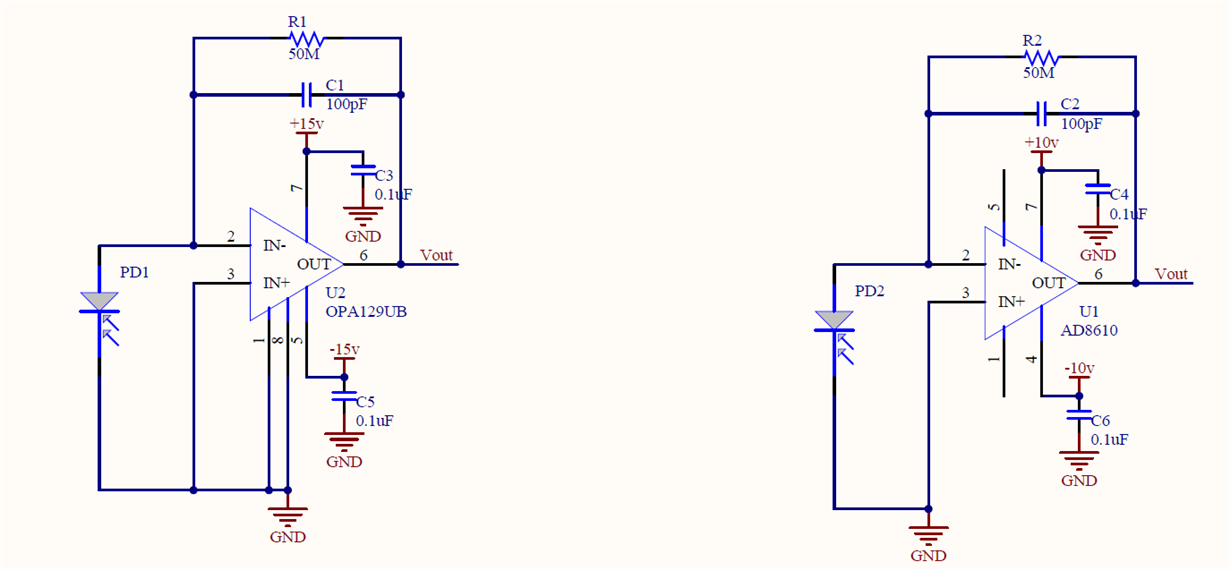The use of OPA2187
1.The following are the sampling circuits.As the instruments' lasers illuminate the dust, the dust scatters.At the same time, the photodiode receives the scattered light signal, and then the flash signal is converted to a voltage signal.This way, the concentration of the dust can be calculated by the size of the voltage signal being converted.
2. When the photodiode receives the scattered light signal, observe the state of the output signal of Vout as the voltage simulation shown below.When the concentration of dust is tested, the Vout's output voltage signal remains the same, otherwise the Vout will fluctuate with the dust concentration.
3.
Dust concentration remained the same, if the environment temperature changes, Vout voltage value will change, this kind of phenomenon is problematic, will cause the instrument test values change with environment temperature change.
4. Present solutions
Select a small chip with Zero Drift parameters to replace, Zero Drift at OPA2187:0.005 mu V/s aC, if there is an effect to be tested.
5. Is there any solution?Please recommend, thank you!




